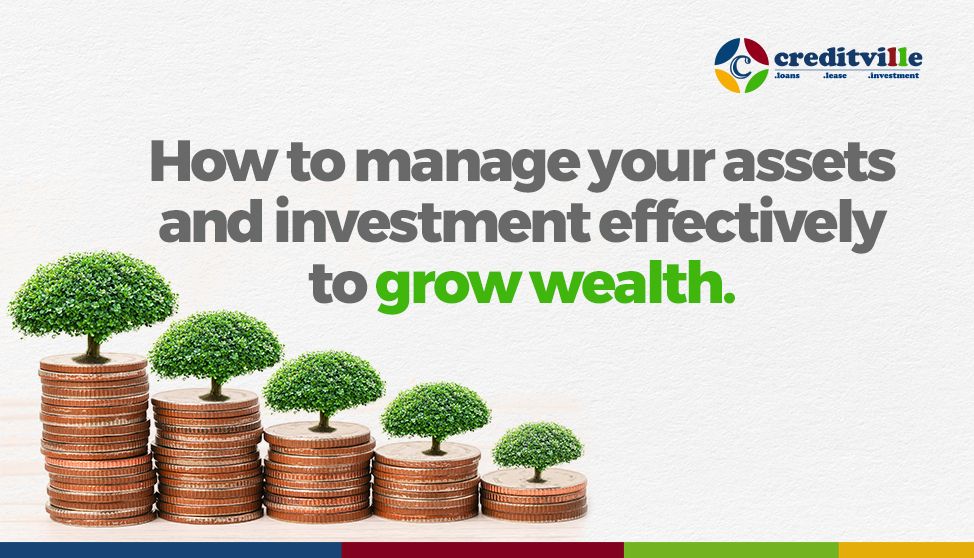Published 21st October, 2022
HOW TO MANAGE YOUR ASSETS AND INVESTMENT EFFECTIVELY TO GROW WEALTH
Creating wealth is not just about how much you invest, but how effectively you manage your assets and investments to grow wealth.

Image courtesy of Omofolaranmi Salaam
Creating wealth is not just about how much you invest, but how effectively you manage your assets and investments to grow wealth.
The earlier you start investing and the sooner you begin compounding your capital, the greater your financial resources will become in the long run. But it’s not so easy to achieve this. It requires planning, discipline, and sacrifice.
You need a strategy that helps you manage your assets and investment efficiently to build wealth over time. And it’s not just about investing in stocks or bonds but also thinking through what asset fits your risk profile best, how do you find the right balance between growth and income?
Should you be investing more aggressively to increase risk or remain safe with fixed-income instruments? What follows are some insights about how to manage your assets for better returns in the long run.
Diversification is the key to successful investment
Diversification is a concept that helps you create a portfolio with a mix of assets, usually stocks, bonds, and cash, to reduce risk.
Diversification makes sense because no single investment is likely to succeed all the time. You’ll have more balanced risk exposure and minimize the risk of losing money.
This gives you a chance to ride out the ups and downs of the market and stay invested for the long term. That’s the best way to grow your wealth!
Asset allocation is equally important
You cannot ignore your asset allocation while building your portfolio. Asset allocation is a critical part of investment planning. You need to decide how much of your portfolio should be in stocks and how much in bonds, cash, and other types of investments.
The key to successful investing is striking the right balance between the risk of loss and potential gain. You don’t want to put all your eggs in one basket, nor do you want to be too conservative in your approach to investing. You want your mix to reflect your risk tolerance and financial goals, as well as your current financial situation. There’s no one-size-fits-all approach.
You need to figure out what percentage of your portfolio should be in stocks and other riskier investments, like real estate and small business ventures. The rest should be in lower-risk investments. You can’t avoid the risk of loss, but you can manage it by diversifying your portfolio.
Make time for research and due diligence
Research and due diligence are essential to building a solid investment portfolio. You need to know what financial instruments suit your risk profile and help you meet your financial goals. Investment is about more than choosing stocks.
You also need to consider bonds, exchange-traded funds (ETFs), commodities, real estate, and other types of investments. What are the risks and rewards of each investment? What happens if the market goes down? How do you manage your risk? You can keep investment insights and recommendations from experts, financial magazines, newspapers, and newsletters in a separate folder.
You can refer to them in times of uncertainty to stay informed about the market and trends. You need to build your investment portfolio carefully. There is no shortcut to success in investing.
Stick to your asset-allocation plan
If you have done your due diligence and have a clear understanding of your financial goals, you should be able to create an asset-allocation plan. Asset allocation will help you choose investment options that fit your goals and risk profile. It’s important to stick to your asset-allocation plan.
Do not let emotions or current market trends influence your investment decisions. You may be tempted to invest more aggressively to increase returns when markets are doing well or be more conservative during a market downturn. Avoid these knee-jerk reactions.
Keep reminding yourself about your financial goals. They should be greater than the temptation to make impulsive investment decisions.
Conclusion
If you want to grow your wealth and accumulate resources for your retirement, you need to start investing. But before investing your money, make sure you understand the basics of investment and how to manage your assets for better returns in the long run.
Investing is about more than choosing stocks. You also need to consider bonds, ETFs, commodities, real estate, and other types of investments.
Once you understand the basics of investment, you need to manage your assets for better returns in the long run by sticking to your asset-allocation plan and making time for research and due diligence.